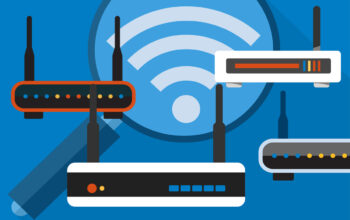A Distributed Denial-of-Service (DDoS) attack is a deliberate effort to interrupt the regular activity of a targeted website, provider, or web by flooding the target or the all-around resources with an overflow of Internet activity.
DDoS attacks are successful by using several compromised information systems as sites of attack traffic. Abused machines typically involve computers and other interconnected tools, such as the Internet of things IoT devices.
Get yourself cybersecurity training and certifications such as CEH, CISA, and CISSP certification training to learn how to combat DDoS attacks.
What are some different types of attacks on DDoS?
The Distributed Denial-of-Service DDoS attacks can be classified into 3 groups
1. Volumetric attacks.
This type of attack is intended to make overcrowding by absorbing all usable processing power between the aim and the wider Internet. Huge volumes of data are sent to the aim using a type of attenuation or other means of making high traffic, such as Internet-connected device requests.
2. Application layer attacks.
Usually referred to as a Distributed Denial-of-Service (DDoS) layer 7 attack (in contrast to the Open Systems Interconnection model’s 7th layer), the purpose of these attacks is to exhaust the capacity of the aim to establish a denial-of-service.
The attacks threaten the level where the server creates websites and delivers them in reply to suggestions from Hypertext Transfer Protocol (HTTP). On the consumer side, a singular Hypertext Transfer Protocol (HTTP) request is computationally inexpensive to perform, although it can be costly for the aim server to react to since the server also opens several documents and performs server requests to make a home page.
It is difficult to protect against Layer 7 threats, as it can be hard to distinguish malware traffic from valid traffic.
3. Protocol attacks.
Protocol attacks sometimes referred to as state-exhaustion attacks, cause a disturbance of the network including over dedicated servers and/or network device services such as security systems and speed converters.
To make the aim unavailable, protocol attacks use vulnerabilities in layer 3 and layer 4 of the protocol layer.
How to identify a DDoS attack?
A web or application unexpectedly being sluggish or inaccessible is the most evident symptom of a Distributed Denial-of-Service (DDoS) attack. Although because such a genuine increase in traffic will produce related reliability problems for a variety of reasons, further analysis is typically needed. You will spot any of these telltale signs of a DDoS attack with traffic analytics tools:
Malicious activity volumes of traffic from a particular An Internet Protocol address or Internet Protocol range.
A deluge of customer traffic that shares a special friend profile, such as system model, geolocation, or update of the web browser.
An unidentified increase in fixed page or end requests. Different patterns of traffic, such as surges at late times of the day, or patterns that seem unusual.
How does a DDoS attack work?
DDoS attacks are carried out on a web of computers connecting to the Internet.
These networks consist of devices and other machines that have been corrupted with malicious software (such as the Internet of things IoT devices), helping an assailant to remotely access them. These individual apps are known as bots (or undead), and a botnet is considered a network of bots.
The assailant can guide an assault once a botnet has been created by submitting remote commands to each bot.
Each bot sends emails to the aim Email address when a victim’s database or server is attacked by the botnet, possibly causing the database or server to become overloaded, resulting in a denial-of-service to regular traffic.
Since each bot is a legal Internet computer, it can be hard to differentiate the assault traffic from regular traffic.
How to mitigate a DDoS attack?
Distinguishing between assault traffic and regular traffic is the main issue in minimizing a DDoS attack. The problem lies in telling the individual customers apart from the traffic assault.
In general, the more intricate the assault, the more important it is that it would be impossible to distinguish the assault traffic from regular traffic – the assailant aims to blend in as much as feasible, make prevention attempts as impractical as feasible.
Mitigation efforts that include blindly reducing or restricting traffic will dump out great traffic with the evil, and the assault can also change and adjust to bypass control measures. A layered approach can yield the greatest advantage in being able to fix a dynamic effort at the disturbance.
Web application firewall.
A WAF (Web Application Firewall) is a mechanism that will help to prevent a DDoS attack on layer 7. The WAF will act as a reverse proxy by putting a WAF between the Web and a source site, shielding the intended site from those forms of malware traffic.
Layer 7 assaults can be hindered by filtering demands based on a series of guidelines used to classify Distributed Denial of Service (DDoS) resources. The ability to fast enforce custom rules in reaction to an attack is a core value of a successful web application firewall (WAF).
Blackhole routing.
Creating a blackhole path and funneling traffic through that path is one option open to nearly all network managers. At its simplest terms, all valid and malware network traffic is redirected to a zero path, or black hole, and lost from the network when blackhole filtering is introduced without clear restrictions requirements.
If an Internet property is undergoing a DDoS attack, as a protection, the Internet Service Provider (ISP) of the property will send all the traffic of the web into a black hole.
Anycast network diffusion.
This reduction technique uses a Multicast network to spread the assault traffic through a distributed server network to the extent that the network consumes the traffic.
This strategy extends the effect of the distributed attack traffic to the stage that it becomes accessible, separating any destructive ability including channeling a flowing river down different smaller channels.
Based on the size of the threat and the size and efficacy of the network, the strength of a Multicast network to minimize a DDoS attack.
To minimize the many potential attack vectors, the DDoS security which we enforce at Cloudflare is multifaceted. Read more about the DDoS security of Cloudflare and how it performs.
Rate limiting.
A means of preventing denial-of-service attacks is also to restrict the number of demands a system can receive within a given time window.
Although rate-limiting helps reduce the theft of content from web removers and minimizing brute strength login attempts it is likely to be inadequate to efficiently tackle a complicated DDoS attack.



